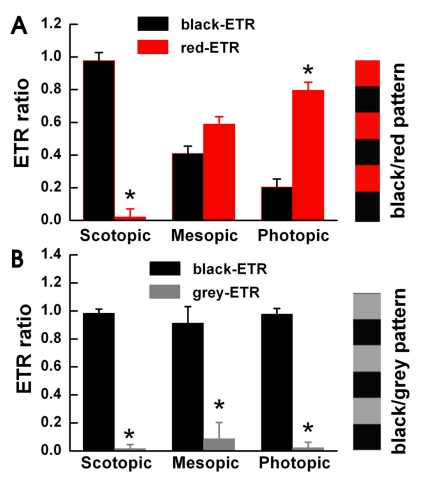Fig. 2.
The goldfish detects movement of color under photopic luminance conditions. We allowed the goldfish to adapt to the three light illumination conditions. We measured the ETR ratio using a square wave black/red pattern (n=5) in Fig. 2A and a black/grey pattern in Fig. 2B. (A) We observed mostly black-ETR's under scotopic conditions, more red-ETR's than black-ETR's under photopic conditions, and almost equal amounts under mesopic conditions. Each specimen displayed different results when stimulated with a black/grey pattern. (B) We used black/grey pattern stripes with identical contrast levels to the black/red pattern stripes used in Fig. 2A. Under all light conditions a black-ETR was the most frequent result. Before the experiment, we allowed each goldfish to adapt to its light level for about 20 minutes. Under the three light illumination levels, we measured similar contrast results of 0.4 (scotopic), 0.42 (mesopic), and 0.43 (photopic). Each bar represents mean±S.E.M. *p<0.05 compared with black-ETR.

